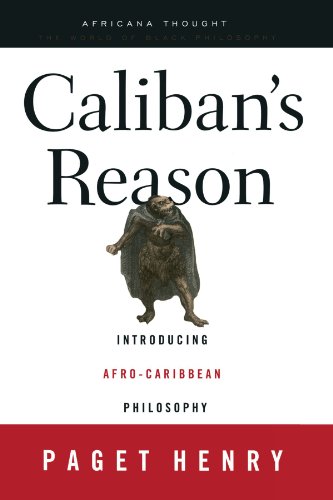Magiciens de la Terre (1989) [French]
Filed under catalogue | Tags: · africa, art, art history, asia, caribbean, colonialism, contemporary art, diaspora, eastern europe, ethnocentrism, globalisation, latin america, middle east, multiculturalism, postcolonialism, south america

Catalogue of an exhibition held 18 May-14 August 1989 at the Centre Pompidou and La Grande Halle-La Villette, curated by Jean-Hubert Martin with the assistance of Jan Debbaut, Mark Francis, Jean-Louis Maubant, Aline Luque, André Magnin and Jacques Soulillou.
“An exhibition loved and hated in equal measure, Martin curated the show to address the fact that there were, as he put it, “one hundred percent of exhibitions ignoring 80 percent of the earth.” He attempted to engage critically with certain aspects of neo-colonial mentality in the West, particularly a resurgent interest in ‘primitivism,’ which Martin felt aestheticized exotic cultures without destablilizing western definitions of fine art, modernism, or identity. The exhibition included works by 100 artists (50 from the so called ‘West’ and 50 from the ‘margins’), attempting to show all on equal footing. The success of this attempt is still disputed and discussed in terms of the exhibition history of the past twenty-odd years, but it remains undeniable that the exhibition enacted an important break with some of the conventions of exhibition-making and strictly defined notions of modernism. Exhibited artists included Marina Abramovic, John Baldessari, Mike Chukwukelu, Braco Dimitrijevic, Yongping Huang, Boujemaa Lakhdar, Richard Long, Sigmar Polke, Jangarh Singh Shyam, Ulay, Jeff Wall, Jimmy Wululu, etc. ” (Source)
With essays by Jean-Hubert Martin, Aline Luque, Mark Francis, André Magnin, Pierre Gaudibert, Thomas McEvilley, Homi Bhabha, Jacques Soulillou, Bernard Marcadé.
Publisher Editions du Centre Pompidou, Paris, 1989
ISBN 2858504989, 9782858504985
271 pages
via Gioni
Interview with curator (Benjamin H.D. Buchloh, Art in America, 1989, EN)
Reviews: 10 French press reviews (1989), more, list of reviews (1989, 30 pp).
Analysis and commentary: Special issue of Les Cahiers du Musée National d’Art Moderne (1989, FR, 101 MB, added on 2019-8-14), Special issue of Third Text (1989, EN), Thomas McEvilley (1990, EN), Cesare Poppi (engage, 2003, EN), Hal Foster et al (2004/07, EN), Daniel Soutif (2005, FR), Reesa Greenberg (Art Journal, 2005, EN), Maureen Murphy (Critique d’art, 2013, FR/EN), Lucy Steeds et al. (book, Afterall, 2013, EN), Pablo Lafuente (2013, EN), Annie Cohen-Solal (Stedelijk Studies, 2014, EN), Adam Jasper (AU&NZ Journal of Art, 2014, EN), Julia Friedel (C&, 2016, EN).
Short documentary (1989)
Wikipedia
Pompidou’s 25th anniversary exhibition (2014)
Film retrospective at Tate (2014)
Exhibition website
Press release (FR/EN), Petit journal (FR)
Publisher
WorldCat
PDF (168 MB)
Comment (0)Paget Henry: Caliban’s Reason: Introducing Afro-Caribbean Philosophy (2000)
Filed under book | Tags: · africa, caribbean, colonialism, consciousness, epistemology, existentialism, historicism, history of philosophy, knowledge, marxism, ontology, philosophy, poeticism, poststructuralism

“Caliban’s Reason introduces the general reader to Afro-Caribbean philosophy.
In this ground-breaking work, Paget Henry traces the roots of this discourse in traditional African thought and in the Christian and Enlightenment traditions of Western Europe. Since Afro-Caribbean thought is inherently hybrid in nature and marked by strong competition between its European and African orientations, Henry highlights its four main influences–traditional African philosophy, the Afro-Christian school, Poeticism and Historicism–as his organizing principle for discussion.
Offering a critical assessment of such writers as Wilson Harris, Derek Walcott, Edward Blyden, C.L.R. James and George Padmore, Caliban’s Reason renders a much-needed portrait of Afro-Caribbean philosophy and fills a significant gap in the field.”
Publisher Routledge, 2000
Africana Thought series
ISBN 0415926459, 9780415926454
xiii+304 pages
Reviews: H. Adlai Murdoch (SubStance, 2002), Claudette Anderson (Small Axe, 2002), Charles Mills (Phil Review, 2003), Clevis Headley (Int’l J of African Hist Studies, 2003), Leslie R. James (North Star, 2004).
Interview with author (Linda Martín Alcoff, 2003)
Comment (0)Curwen Best: The Politics of Caribbean Cyberculture (2008)
Filed under book | Tags: · caribbean, cyberculture, internet, literature, music, music video, reggae, technology, television, video games

This book covers significant new ground, examining the impact and imprint of new leading technology on a range of popular expressions. This technology includes the internet, the computer, the cell phone, television, and radio, among others. Some of the specific expressions and phenomena treated include: tourism, big budget films, sports, video games, entertainment culture, religious and gospel culture, mobile culture, popular music, writing and technology, and porn. The work shows acute awareness of the wider global contexts–social, cultural, political, and spiritual–that form the backdrop for Caribbean cultural reconfiguration. Curwen Best argues that Caribbean culture has gone wireless, virtual, and simulated in the age of the machines.
Publisher Palgrave Macmillan, 2008
ISBN 0230603769, 9780230603769
260 pages

